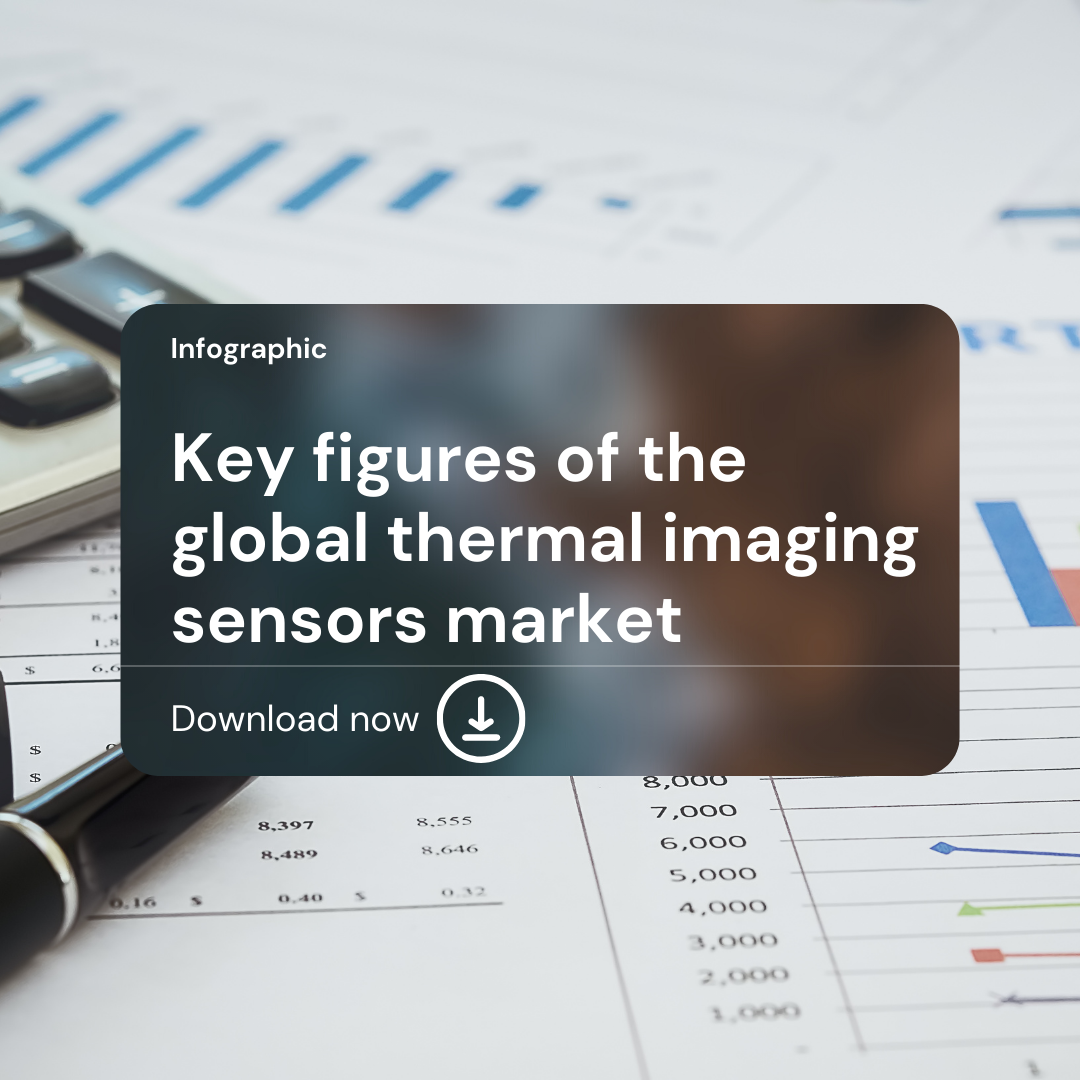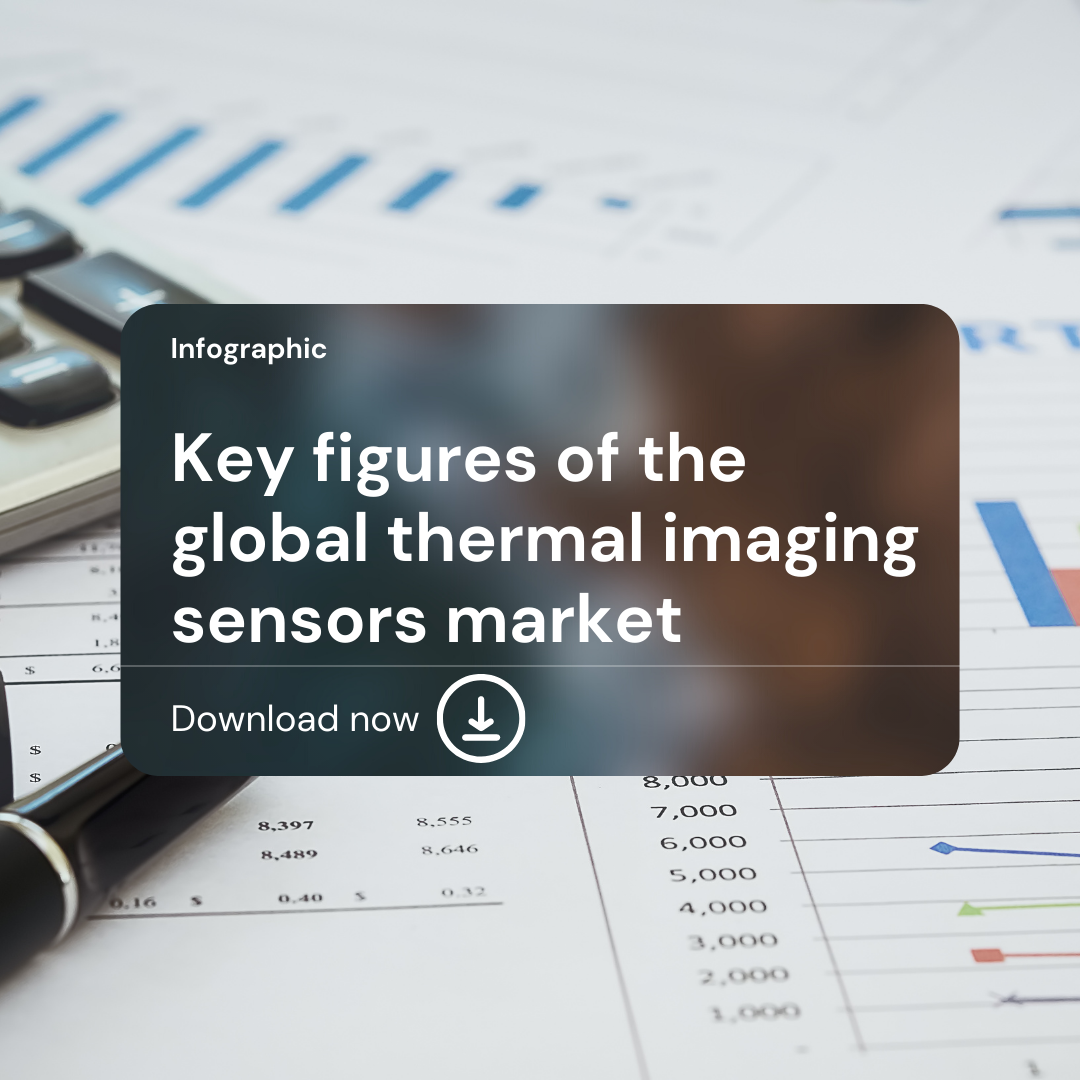Precision Thermal Imaging for Hunting & Leisure: Premium European Solutions for ...
The Hunting & Leisure market is evolving—driven by advanced technology, changing regulations, and the expectations of a new generation of responsible hunters...

April 08, 2024 . 4min read
The health pandemic has been sending shockwaves across the global economy ever since the crisis struck two years ago, and the aftershocks have brought unprecedented changes and upheaval for both individuals and organizations around the world. As the pandemic took hold, workplaces were closed, travel restrictions were imposed and homeworking arrangements were put into action for large swathes of the workforce, causing companies major headaches in the process.
Nevertheless, the infrared market appears to have weathered this exceptional storm, since forecasts believe that the annual average growth rate will hit 7% over 2021-2025.
As the world continues to emerge from the crisis, which factors will power or hinder growth in the infrared market? Read on for a rundown of the latest news and sure-fire assets in the infrared market in 2022.
The defense industry can be credited with masterminding many of the key IR applications and has long been a powerhouse behind the market's growth as military forces constantly search for increasingly compact solutions delivering superior performance and using less energy. In this case, we are referring to SWaP detectors (Size, Weight and Power). HOT technology (High Operating Temperature) aims to reduce the cooler's size and power draw, which explains why it is especially being used to develop SWaP systems. Geopolitical issues and larger budgets are fueling growth in this market. The annual growth rate is expected to average 5% by 2026.
Video surveillance solutions are still a must-have for addressing strategic and security needs. They are used in a wide variety of applications, including border protection and control, civil and urban surveillance, and close monitoring of critical sites and infrastructures, such as military bases, nuclear power plants, oil rigs, ports and airports. Infrared technology plays a key role in all forms of surveillance due to its ability to raise the bar on reliability and efficiency. Infrared detectors can be embedded in fixed cameras and drones to bring long-range and wide-angle vision capabilities, while enhancing detection, recognition and identification during the day and at night in all weather conditions through their passive detection technology (which shows what is happening in front of the camera without any need for additional lighting). According to forecasts, the surveillance market should achieve 7 to 8% growth by 2026.
Lastly, the leisure market also harbors tremendous prospects with manufacturers launching products featuring embedded image fusion capabilities (thermal and thermal images) while racing to release products offering greater performance and increased sensitivity (NETD).
The infrared market is bound by a stringent set of legal regulations governing detector imports and exports. The Wassenaar Arrangement established by 33 states in 1996 sets out a framework for controlling exports of conventional arms and dual-use goods and technologies.
Products and technologies are considered to be dual-use if their properties can be diverted from their civilian purposes to serve strategic interests instead. In most cases, these sensitive goods are designed for civilian applications, but they can be used for military purposes.
In the United States, the rules governing the export of US defense and military equipment overseas are enshrined in the International Traffic in Arms Regulations (ITAR).
The bottom line is that the vast majority of infrared cameras produced around the world are subject to ITAR Regulations, since they contain at least one US component.
This situation may put the brakes on the market's development, but it also represents an opportunity for component manufacturers outside the US. For example, thermal camera vendors can circumvent ITAR Regulations if they incorporate European components into their products.
Finally, nations around the world see infrared as a strategic technology, since it bolsters their technology independence. But countries vary significantly in their support for IR. As firm believers in the importance of infrared technology, China and the USA are actively bankrolling the necessary research and equipment to maintain their competitive advantage.
But newcomers face considerable technical barriers when it comes to gaining a foothold in the market. In-depth technical knowledge of the production processes is a prerequisite, and so is the power to plow significant money into equipment and hardware, especially for cleanrooms.
In the meantime, if you would like to find out more, feel free to download the infographic showing the trends in the infrared market in 2022.

At the same time, the infrared technology is entering widespread use as it starts fulfilling a growing number of civilian applications. New use cases are a common occurrence. As a result, volumes increase and prices fall. In today's world, infrared forms the backbone of several research projects focusing on smart buildings and connected cars.
In the case of smart buildings, construction firms, real-estate developers, owners and property asset managers are constantly looking for ways to make buildings more efficient, sustainable and safe. Smart buildings harness IoT connectivity, sensors and the cloud to remotely monitor and control a broad array of construction systems, such as heating, air conditioning, lighting and security systems. Infrared sensors offer a variety of features for improving man-machine interactions. They can be used to detect movement, count people, monitor human presence and measure temperatures. They allow buildings to self-regulate by tracking and adjusting the temperature and controlling the lighting.
In the automotive sector, thermal imaging can complement and improve the redundancy of the sensors already fitted inside autonomous vehicles, since current vision systems feature a combination of visible imaging sensors, LIDAR and/or radar technology to provide information about the vehicle's surroundings. However, some factors may affect the performance of these systems, poor light being one of the main culprits. Thermal images are compatible with the AI-based recognition and detection algorithms and neural networks that are fast gaining traction in the transportation sector. The information acquired can be displayed for the driver to see or processed directly by the vehicle.
The infrared market is still dominated by the sector's long-established organizations, including Asian companies that continue to release ever more efficient and sophisticated products.
Partnership, collaborative and M&A strategies are common practice among existing companies, since they increase shares in the thermal imaging market, frequently produce economies of scale and expand their global footprint.
As for the security and surveillance sector, conditions are fertile for growth as the technology enters the mainstream, and nations step up their border control activities.
With the Covid tech bubble now over, performance in the thermography sector is returning to its 2019 levels.
The next few years will prove critical for analyzing how the Covid health crisis has actually transformed and affected the infrared market. Sensing opportunities and anticipating competitive strategies will be key to keeping pace with the sector's heavyweights.
New and improved technologies will also be a game-changer. Watch this space!
In the meantime, if you would like to find out more, feel free to download the infographic showing the trends in the infrared market in 2022.
